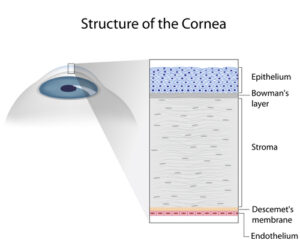Posted by: Clear Advantage in Featured, LASIK on July 20, 2022
Are you tired of having to wear glasses or contacts every day? Every year, millions of people undergo LASIK to achieve their dreams of visual freedom.
What’s not to love about a world where you can see clearly without anything in your way? Contrary to what you may have heard, LASIK is a permanent way to correct your vision.
It can be life-changing for those with nearsightedness, farsightedness, and astigmatism. By gently reshaping the surface of your eye, laser eye surgery can provide a lifetime of clear vision without the need for contacts or glasses.
But the biggest question on your mind is if you’re a candidate for LASIK! Like any procedure, LASIK is not a fit for everyone. Keep reading to find out if you may be a good candidate for LASIK!
1. You Are At Least 18 Years Old

LASIK is FDA-approved for those who are 18 or older. While going through puberty, your body is still changing and developing.
Your eyes are also still changing. Your prescription is likely to change throughout adolescence.
Getting LASIK while your vision is anything but stable would be a poor decision. It would render the procedure ineffective. You may even need a touch-up to get the results you want later.
For LASIK to work, it’s meant to be a one-time, permanent method of vision correction. If you want the best possible results, wait to get LASIK until you are at least 18 years old.
Waiting a little longer to have LASIK will be worth it when you have a lifetime of clear, unencumbered vision to look forward to!
2. Your Prescription Hasn’t Changed in At Least a Year

Not everyone who is 18 years or older has a stable prescription. Turning 18 isn’t a magic wand that ensures your vision will stabilize automatically.
Most people who want LASIK may need to wait until their mid to late twenties before their vision finally stabilizes. Your mid to late twenties is when most LASIK surgeons recommend having the procedure.
It ensures that your eyes are stable and your prescription hasn’t changed. Your prescription needs to remain unchanged for a year before you have LASIK.
LASIK can only correct your current refractive errors. A stable prescription supports a permanent outcome. There is a lower chance of needing a follow-up enhancement procedure.
Suitable LASIK candidates have a prescription that hasn’t changed in a year at a minimum.
3. You’re In Good Health

You can only have LASIK if your eyes are healthy. That means your eyes should be free of any active infections, and you should not have had any recent eye injuries. Conditions such as severe dry eye and glaucoma can disqualify you from being able to get LASIK.
Besides having healthy eyes, you also need to be in good health. You may not be a good candidate for LASIK if you have an autoimmune disease, diabetes, or rheumatoid arthritis. These conditions can affect your ability to heal after the procedure.
4. Your Refractive Error Is Within the Treatment Level

Laser eye surgery can correct multiple types of refractive errors, but they must fall within a certain range. If the degree of your nearsightedness, farsightedness, or astigmatism is too high, LASIK may not be the best treatment for you.
During your LASIK consultation, your eye doctor will measure your refractive error to check that it falls within the scope of LASIK’s treatment level. If your refractive error is too high, they may recommend a LASIK alternative like PRK or the EVO Visian ICL.
5. You’re Not Currently Pregnant or Nursing

When you are pregnant or nursing, fluctuating hormonal levels in your body can affect your eyes. It’s not uncommon to notice that your vision is blurry or your prescription seems less effective.
If your vision is still fluctuating, it’s not a good time to get LASIK. Wait to have LASIK once you’re no longer pregnant and at least three months after completing nursing. Waiting will give your eyes time to stabilize and return to normal.
6. Your Corneas Are Thick Enough
One of LASIK’s most crucial parts involves creating a flap in the cornea. However, if your corneas are too thin, this portion of LASIK becomes unsafe.

During LASIK, your surgeon creates a small flap in the cornea, allowing them to reshape the tissue underneath. The flap is then folded back to cover the area. It acts like a sort of bandage as the eye heals.
Many people are unaware that something as simple as the thickness of your corneas can affect your ability to qualify for LASIK.
The only way to know if you have thick enough corneas to undergo LASIK is to have a LASIK consultation. It’s not something you can measure on your own.
If your corneas are too thin, your eye doctor may recommend a LASIK alternative that you may be a better fit for during your LASIK consultation.
7. You Have Realistic Expectations About What LASIK Can Achieve

Most patients that choose to undergo LASIK end up with 20/20 vision or better and are incredibly happy with their results. Many can leave behind their glasses or contacts for good.
However, every patient is different. Although most patients can achieve visual freedom, it’s not guaranteed, as every patient is different.
Before getting laser eye surgery, you should be realistic about what LASIK can achieve. While the goal is always to correct your refractive error to the point where you can see clearly on your own, this is not always possible.
It may not be a suitable procedure for you if you don’t feel like you can be realistic about getting LASIK. Still, there’s a reason that LASIK has a 96% rate of patient satisfaction! Millions of patients are happy with their crystal clear vision, and you could be too!
Are you ready to join the ranks of people who are now living their best lives thanks to LASIK? Find out if you’re a good candidate for LASIK by scheduling your consultation at Clear Advantage Vision Correction Center in Portsmouth, NH, today!






